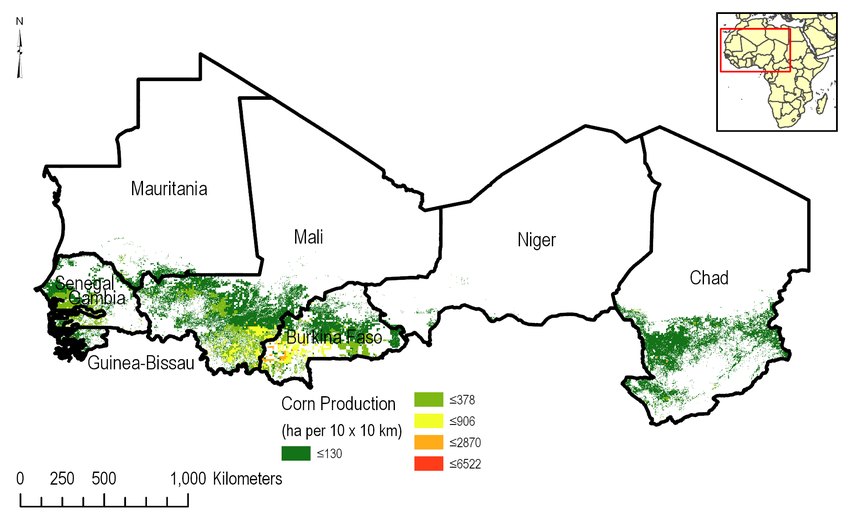Caterpillar Legionnaires' disease treatment
Mlle CONDE Nassou1 , Prof ATTA Sanoussi1* , Dr ZABEIROU Hachimou 2 , Dr MAIGA Idrissa 1, Dr NDIAYE Mbaye 1 1Centre Regional AGRHYMET/CILSS BP 11011 Niamey -Niger - 2Université Abdou Mounouni de Niamey
The armyworm Spodoptera frugiperda is a phytophagous moth which, since its introduction into Africa, has seriously affected maize production, one of the main food crops in most countries south of the Sahara. Insecticides, often of dubious quality, are widely and abusively used by growers, posing a risk to the environment and to human and animal health. The main aim of the present study, which is part of the search for environmentally-friendly alternatives to synthetic pesticides, is to assess the efficacy of Jatropha curcas and Azadirachta indica oils and of aqueous extracts of Khaya senegalensis bark and Parkia biglobosa leaves on the larval stages of the aforementioned caterpillar.
The trial was conducted under controlled laboratory conditions (temperature, humidity and photoperiod) on 2nd and 4th instar larvae using seven (7) doses of oils (0.125 to 5%) and four (4) aqueous extracts (10, 15, 20 and 30%) in four replicates for each larval stage, following a completely randomized experimental design. The efficacy of the plant extracts was compared with a reference product, Titan 25 EC (Acetamiprid 25 g/l).
The larvicidal effect of jatropha and neem oil was observed on both L2 and L4 larvae of S. frugiperda from the very first days. At a concentration of 0.75% (C4), cumulative mortality on L2 larvae was 81% and 56% respectively for jatropha and neem, compared with 75% for the reference product. For L4 larvae, cumulative mortality was 84.38% and 65.63% respectively, compared with 75% for Titan 25EC. For aqueous extracts, mortality observed on L2 larvae 6 days after treatment with K. senegalensis was 65.63 and 81.25% respectively for concentrations of 20% and 30%. P. biglobosa mortality was 78.13 and 93.65% respectively. On L4 larvae, it is 50 and 75% for K. senegalensis and 65.63 and 81.25% for P. biglobosa.
At concentrations of 5 and 0.75%, no significant difference was observed between Titan 25 EC and the two vegetable oils in L4 larvae. Similarly, no significant difference in mortality was observed in L2 larvae at concentrations of 0.75% or less. Jatropha oil seems to perform better, and the results confirm those of previous studies showing the efficacy of these plant oils on insects in general and on Lepidoptera in particular. Numerous studies (MAKKAR et al, 1997) have shown that the toxicity of J. curcas oil is due to the presence of phorbol esters, natural organic compounds belonging to the Tigliane family of Diterpenes. At concentrations of 20% and 30% (200 and 300g/l), the aqueous extracts studied provide effective control of the L2 and L4 stages of S. frugiperda, keeping their populations at a tolerable level.
The larvicidal effect of jatropha and neem oils on both L2 and L4 larvae of S. frugiperda was seen from the very first days. Concentrations of 5% and 0.75%, giving a mortality of over 65%, could be retained for field work. Aqueous extracts of K. senegalensis and P. biglobosa at doses of 200 and 300g/l also proved effective against the caterpillar in the laboratory, and further work is needed in the field.
Contact: sanoussi.atta@cilss.int


